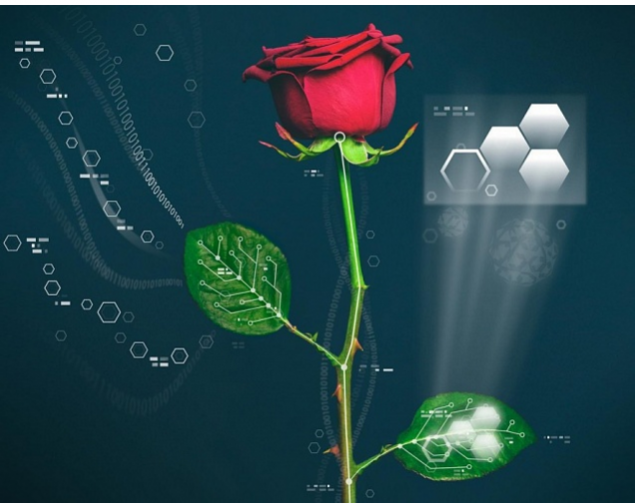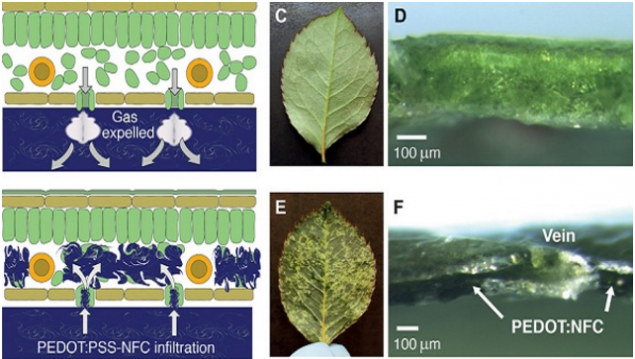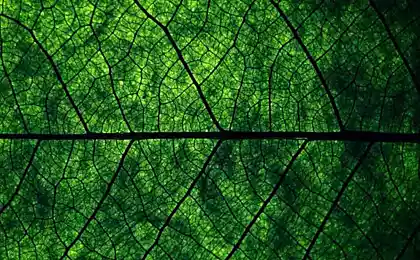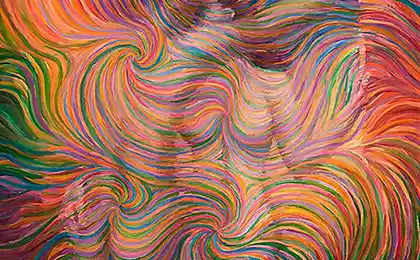450
Energy from chlorophyll
The staff of the laboratory of organic electronics Germany University fought over the establishment of such plants for more than 20 years, but due to lack of funds the research was progressing very slowly.
Scientists invented polymer PEDOT-S, which is absorbed into the vascular system of plants like the water. Once inside the rose, the polymer forms a "wire" in the xylem (the primary water-conducting tissue of vascular land plants) — it is possible to send an electric current, while not inhibiting the access of water and nutrients in the body.

In plants, as in the human body contains electrolytes (substances that conduct electric current by the decomposition of molecules in solution into ions). Connecting the wires to the electrolyte, scientists have been working transistor and logic gate — the basic element of digital circuits.
In addition, Swedish scientists put the roses in a syringe with a mixture of PEDOT-S and nanofibers from cellulose. With the help of vacuum they removed the air from the tissues, and in the vacated cavity was added a solution of PEDOT-S. Then they turned on the current, and the leaves slowly began to change color, going from bluish to greenish shades and back.

"Now it will be possible to talk seriously about power plants: we will be able to set their sensors to use produced in the chlorophyll energy to build "green antenna and to make new materials. And all this will happen naturally," said project Manager Magnus Berggren (Magnus Berggren).
However, the most realistic application of the new sensors are opening the plant health (similar to those used for monitoring the condition of the heart or brain activity). In addition, biologists from other units of the University help Berggren to create a system for the production of electricity from sugar plants.
P. S. And remember, only by changing their consumption — together we change the world! © Join us at Facebook , Vkontakte, Odnoklassniki
Source: ecotown.com.ua/news/Vcheni-zmohly-vzhyvyty-mikroskhemy-v-zhyvu-troyandu-dlya-otrymannya-enerhiyi-/
Scientists invented polymer PEDOT-S, which is absorbed into the vascular system of plants like the water. Once inside the rose, the polymer forms a "wire" in the xylem (the primary water-conducting tissue of vascular land plants) — it is possible to send an electric current, while not inhibiting the access of water and nutrients in the body.

In plants, as in the human body contains electrolytes (substances that conduct electric current by the decomposition of molecules in solution into ions). Connecting the wires to the electrolyte, scientists have been working transistor and logic gate — the basic element of digital circuits.
In addition, Swedish scientists put the roses in a syringe with a mixture of PEDOT-S and nanofibers from cellulose. With the help of vacuum they removed the air from the tissues, and in the vacated cavity was added a solution of PEDOT-S. Then they turned on the current, and the leaves slowly began to change color, going from bluish to greenish shades and back.

"Now it will be possible to talk seriously about power plants: we will be able to set their sensors to use produced in the chlorophyll energy to build "green antenna and to make new materials. And all this will happen naturally," said project Manager Magnus Berggren (Magnus Berggren).
However, the most realistic application of the new sensors are opening the plant health (similar to those used for monitoring the condition of the heart or brain activity). In addition, biologists from other units of the University help Berggren to create a system for the production of electricity from sugar plants.
P. S. And remember, only by changing their consumption — together we change the world! © Join us at Facebook , Vkontakte, Odnoklassniki
Source: ecotown.com.ua/news/Vcheni-zmohly-vzhyvyty-mikroskhemy-v-zhyvu-troyandu-dlya-otrymannya-enerhiyi-/
























